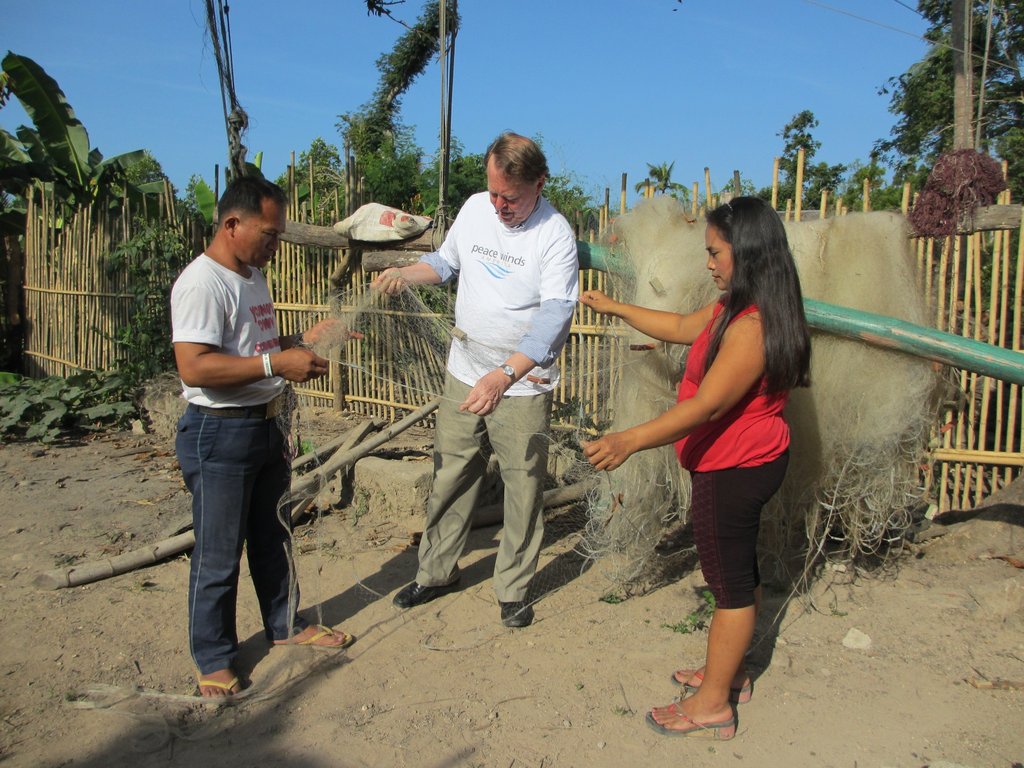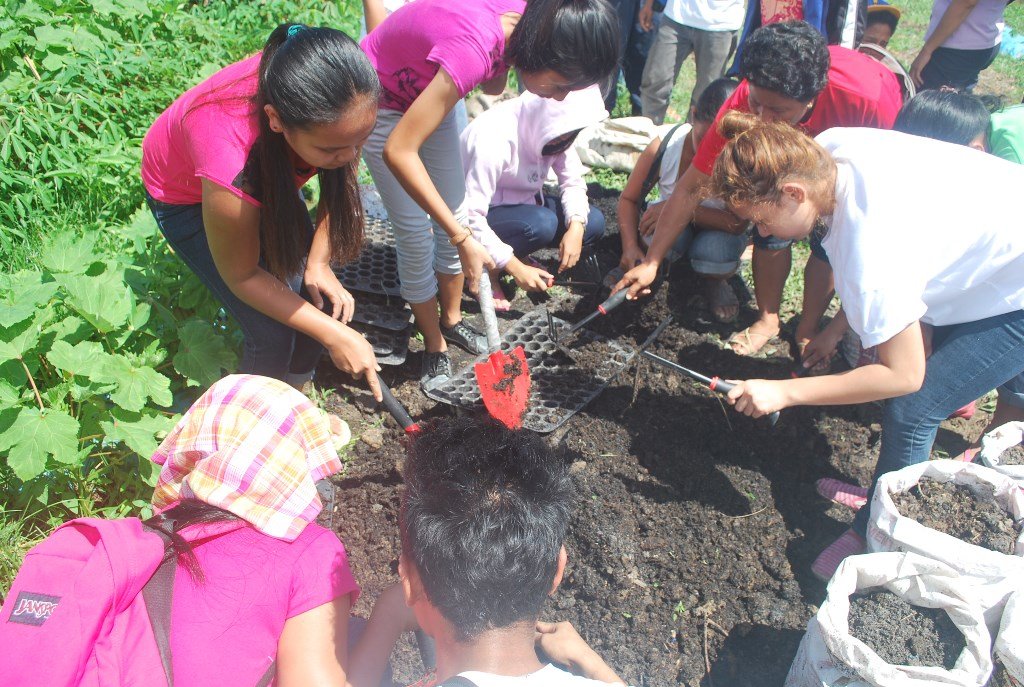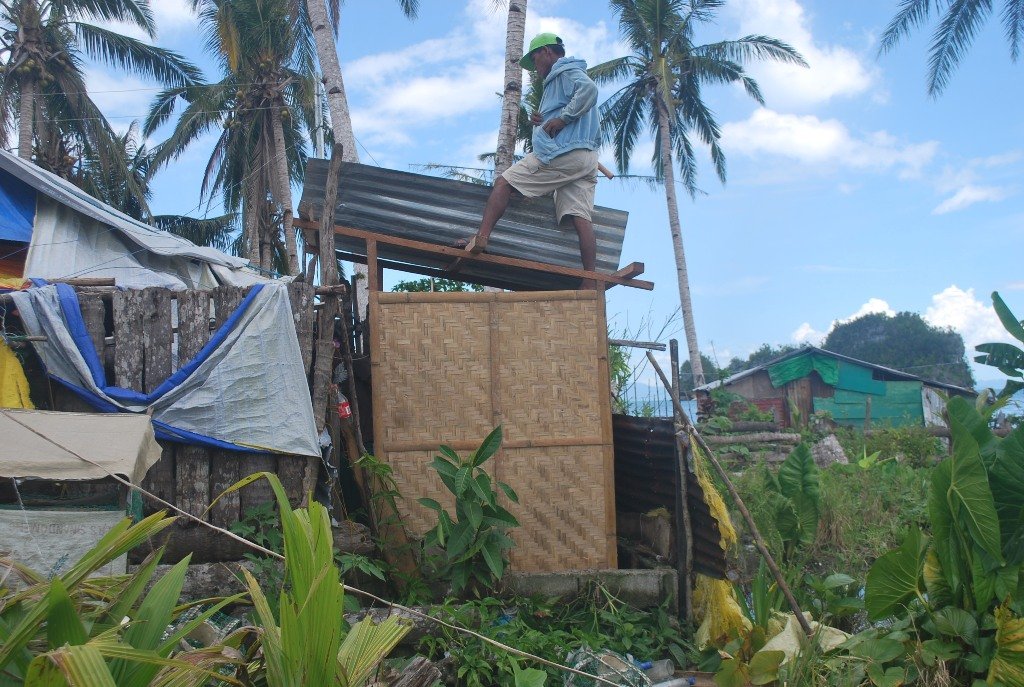By Dolly Ngo | Program Assistant
Almost one year ago, Super Typhoon Haiyan became one of the strongest storms on record to devastate the Philippines. Immediately after the Typhoon, we worked with relief agencies to provide food, water and supplies to many displaced families. In the weeks and months that came later, our more than 20 of our partner organizations in the Philippines have shifted their focus toward long-term recovery.
Peace Winds America (PWA), is still working to restore the livelihoods of six barangays (villages) on the Busuanga Island effected by Super Typhoon Haiyan. Your donations provided boat repair supplies , fishing gear, livestock (swine, chicken, water buffalo), farm tools, seeds for rice, corn, root crops and vegetables. PWA has also implemented a communal seed bank program. They are also working to prepare affected communities for future disasters by conducting disaster mitigation education and training. This training and support is helping local leaders understand and implement programs to make their areas more disaster resilient.
Water, Agroforestry, Nutrition and Development Foundation (WAND) has been able to help survivors in Ormoc City, Albuera, Tacloban and Palo in a number of ways. Through a safe sanitation initiative in the provinces of Samar and Leyte, they have been able to provide low-cost toilets to these communities. Local villagers helped install the toilets themselves! WAND’s food security initiative has also helped community members develop their own sustainable food supply. Your donations provided communities with high-valued vegetable seeds, organic fertilizer and training so villagers can properly maintain their crops. This initiative has really gotten everyone in the communities involved, creating a great sense of camaraderie and even providing a good way for the youth to make good use of their free time.
Architecture for Humanity has been working on reconstructing Picas Elementary School in Tanauan, Leyte. Typhoon Haiyan left the school with roof damage, window and shutter damage, and water damage throughout the building. But the goal of Architecture for Humanity’s work is to focus on long- term solutions rather than “band-aid” fixes in response to disasters. Two of Architecture for Humanity’s program directors participated in a collaborative workshop to help leaders in Leyte become a more disaster-resilient community.
Of course, all of this great work in response to Super Typhoon Haiyan is only possible thanks to your great support!
Next week, GlobalGiving will be visiting the people in the Philippines that have been working so hard to rebuild after this terrible tragedy. What questions do you have for these organizations? Let us know what’s on your mind in the comments and we’ll get back to you when we return in a few weeks.
Thank you again for giving through GlobalGiving. When you give through GlobalGiving, you’re not only investing in immediate disaster relief, but you’re ensuring that survivors of events like Typhon Haiyan will be supported for the long-haul, and will be able to build more resilient communities for the future.
Project reports on GlobalGiving are posted directly to globalgiving.org by Project Leaders as they are completed, generally every 3-4 months. To protect the integrity of these documents, GlobalGiving does not alter them; therefore you may find some language or formatting issues.
If you donate to this project or have donated to this project, you can receive an email when this project posts a report. You can also subscribe for reports without donating.
When a disaster strikes, recovery efforts led by people who live and work in affected communities are often overlooked and underfunded. GlobalGiving is changing this reality. Since 2004, we've been shifting decision-making power to crises-affected communities through trust-based grantmaking and support.
We make it easy, quick, and safe to support people on the ground who understand needs in their communities better than anyone else.
They were there long before the news cameras arrived, and they’ll be there long after the cameras leave. They know how to make their communities more resilient to future disasters, and they’re already hard at work. GlobalGiving puts donations and grants directly into their hands. Because the status quo—which gives the vast majority of funding to a few large organizations—doesn’t make sense.
Questions about this project? Contact us



